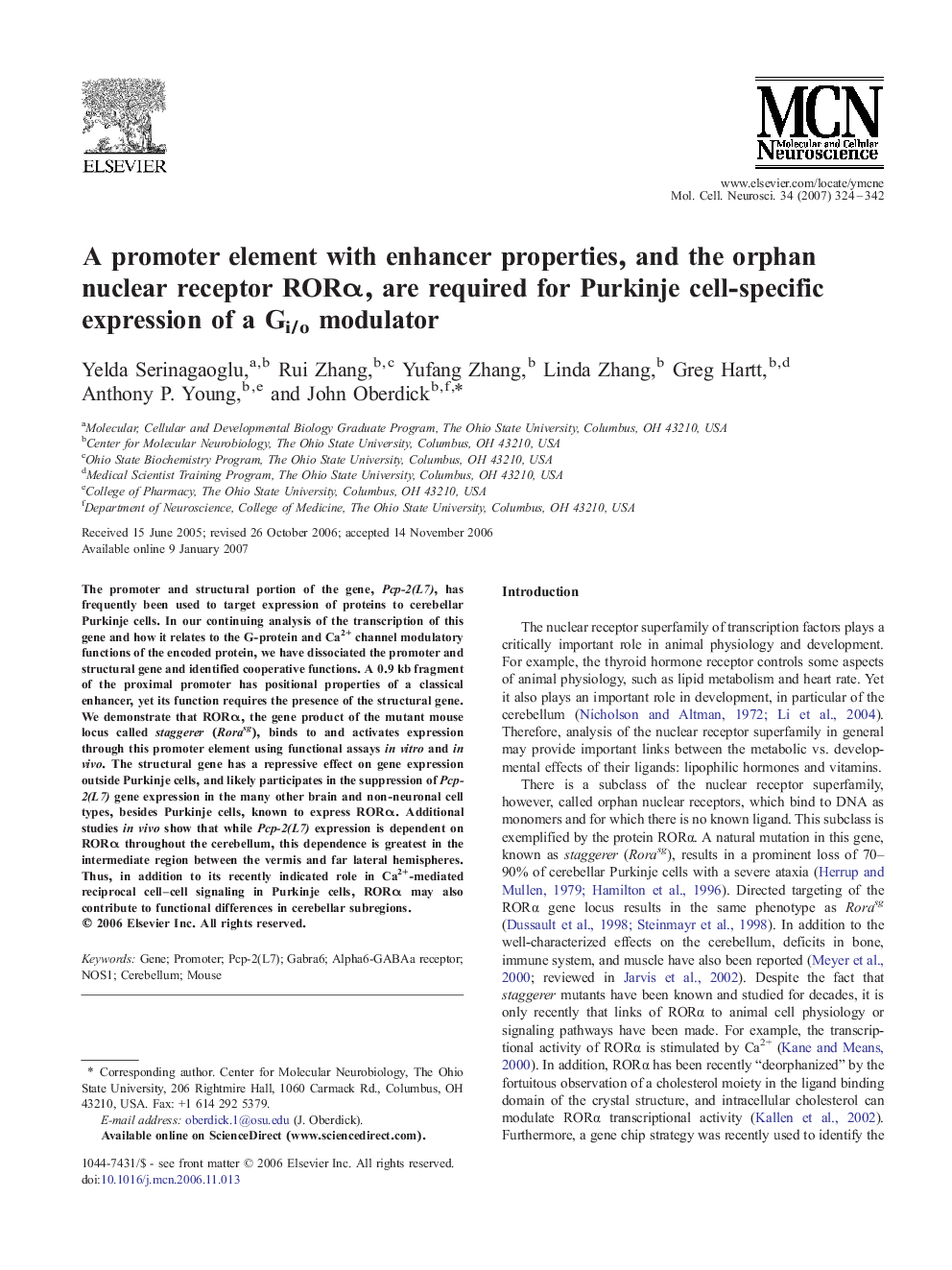| Article ID | Journal | Published Year | Pages | File Type |
|---|---|---|---|---|
| 2199284 | Molecular and Cellular Neuroscience | 2007 | 19 Pages |
The promoter and structural portion of the gene, Pcp-2(L7), has frequently been used to target expression of proteins to cerebellar Purkinje cells. In our continuing analysis of the transcription of this gene and how it relates to the G-protein and Ca2+ channel modulatory functions of the encoded protein, we have dissociated the promoter and structural gene and identified cooperative functions. A 0.9 kb fragment of the proximal promoter has positional properties of a classical enhancer, yet its function requires the presence of the structural gene. We demonstrate that RORα, the gene product of the mutant mouse locus called staggerer (Rorasg), binds to and activates expression through this promoter element using functional assays in vitro and in vivo. The structural gene has a repressive effect on gene expression outside Purkinje cells, and likely participates in the suppression of Pcp-2(L7) gene expression in the many other brain and non-neuronal cell types, besides Purkinje cells, known to express RORα. Additional studies in vivo show that while Pcp-2(L7) expression is dependent on RORα throughout the cerebellum, this dependence is greatest in the intermediate region between the vermis and far lateral hemispheres. Thus, in addition to its recently indicated role in Ca2+-mediated reciprocal cell–cell signaling in Purkinje cells, RORα may also contribute to functional differences in cerebellar subregions.
